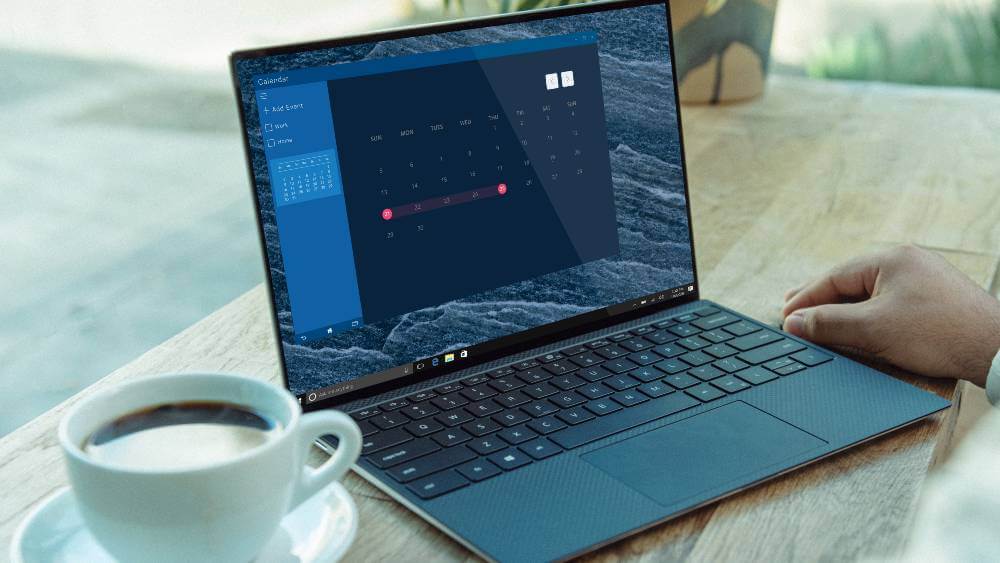You are welcome to another informational article on what is a Front-End Developer.
This article will look at Front-End Developers, the job description, and the education requirements.
At the end of this article, you will understand the benefits of becoming a Front-End Developer and the prospects.
This article will examine the following and more:
- Front-End Developer – Overview
- Scope of Practice – Job Description
- Education Requirements
- Benefits of Becoming a Front-End Web Developer
- Future Outlook of Front-End Developer
So let’s begin.
Front-End Developer – Overview

Front-End Developers are responsible for creating websites and applications using web coding languages such as HTML, CSS, and JavaScript.
These languages enable users to access and interact with the website or application.
Front-End Developers are responsible for implementing the design elements displayed when visiting a website.

Front-End Engineers are responsible for developing a website or application’s user interface (UI), which defines both the functionality of each component and its visual appearance.
Someone who wants to establish a website might engage Front-End Developers to design the website’s layout.
The Front-End Developer is responsible for deciding where to put images on the website, how the navigation should look, and how the site should be presented.
A significant portion of their work ensures that the website or application design and organization are user-friendly and straightforward to navigate.
Scope of Practice – Job Description

There is a significant amount of consistency in a Developer’s day-to-day activities; many of the operations they execute each day need specialized knowledge, such as coding in JavaScript or HTML.
Front-End Developers’ primary responsibility is ensuring site users have an easy time interacting with the page they are viewing.
They incorporate design, technology, and programming elements into coding a website’s appearance.
In addition, they are responsible for troubleshooting the website.
When you go to a website, everything you look at, click on, or utilize in any other way results from the work of a Developer specializing in the front-end.
You may generally anticipate that the Front-End Developers role will contain some or all of the following responsibilities, even though there is some variation from company to company in this regard:
- Improving the overall experience of the user
- Creating concepts through the use of HTML, JavaScript, and CSS
- Creating and maintaining the user interface
- Putting design into practice (responsive design) on mobile websites
- Developing cross-browser applications that enhance user interaction with a website independent of the browser used
- Managing the workflow of the software
- Adhering to the most effective SEO methods
- Addressing problems and conducting usability testing
Education and Training

Some qualifications may need to be met to secure a position as Front-End Developers, but this will vary based on the sector and the organization’s size.
These are the following:
Education
A Bachelor’s degree in computer science or a closely related subject is the minimum education level required of Front-End Developers.
In addition, you need to have a solid understanding of web design tools and programming languages for this position.
Training
It is common practice for Front-End Developers to receive their training through postsecondary education, self-directed study, and on-the-job experience.
Because Front-End Development is a technically demanding field, prospective applicants must have an extensive technical knowledge base, a comprehensive understanding of web development tools and systems, and programming languages.
As part of the onboarding process, Front-End Developers might also receive additional on-the-job training tailored specifically to the positions they will be filling.
Certification
There are several different certification programs that Front-End Developers may obtain.
Certifications allow you to demonstrate to both your present employer and possible future employers that you possess the necessary development skills and qualifications.
Additionally, Front-End Developers have the opportunity to get credentials, which can help them understand their tasks more and expand their prospects for this career path.

These are some common certifications for Front-End Developers:
- Adobe Certified Expert (ACE)
- Certified Web Development Professional (CWDP)
- W3C Front-end Web Developer Professional
Others include Microsoft developer certifications:
- Microsoft Technology Associate
- Microsoft Certified Solutions Developer
Workplace Environment

Front-End Developers often work 40 hours weekly, Monday through Friday, in an office during conventional business hours.
They work mostly at a desk in front of a computer, using coding and other programming languages to construct the graphical components of a website application.
Front-End Developers operate their businesses as independent contractors from their homes.
A career in Front-End Web Development comes with several benefits, including lucrative earnings, high demand in the labor market, job security, and plenty of chances for professional and personal growth and mobility.
Employers are searching for individuals who can find solutions to challenges; they don’t just want people who can code; they want people with problem-solving capabilities who can collaborate with graphic and user experience designers to solve significant issues.
The Front-End Development industry offers a lot of leeway regarding when and where you can work.
There are typically just as many part-time and full-time employment opportunities as freelance work.
Front-End Web Developer Programming Languages and Tools

Most Front-End Developers spend most of their time working in HTML, CSS, and JavaScript; hence, mastery of each of these languages is essential to the success of Front-End Developers.
Front-End Developers use HTML to lay out the fundamental structure and content of a document. Cascading Style Sheets are used for styling, while JavaScript is used in circumstances requiring advanced interactivity.
In addition, they may employ a technique known as AJAX, which is an acronym for JavaScript and XML, to update particular sections of a website without having to reload the entire page.
Languages
The fundamental building blocks of Front-End Development include markup languages such as Hypertext Markup Language, CSS, and JavaScript.
The three languages are not very difficult to study and provide a great deal of latitude for creative expression and flexibility.
You must be proficient in these three programming languages and the JavaScript frameworks.
Front-End Developers may also utilize Python, Ruby, NodeJs, PHP, or any scripting tool, to readily integrate data with the server-side of their website, even though these languages are used far less frequently.
Libraries
It is also common practice for Front-End Developers to make use of Javascript libraries that have been developed on these computer languages, such as AngularJS, jQuery, and React, and design frameworks such as Foundation and Bootstrap.
The modularity and power of CSS are both boosted with the use of extensions like SASS.
Design Software
To test and experiment with the user interface before working out the actual code, Front-End Developers will typically use graphic design tools to create a website prototype before beginning to code.
It allows them to test and experiment with the user interface before working out the actual code.
Depending on the team’s size and the project’s breadth, the procedure may take nothing more than a pencil and some paper.
However, it may call for graphics editing applications like Sketch or Photoshop or more powerful graphical editing tools like Illustrator or Figma.
Code Editors
The application Front-End Developers select to write the code for a client’s website is called the “code editing tool.”

While other Programmers favor using a more feature-packed IDE like Visual Studio or Eclipse, others choose to keep their editing environment as simple as possible by using something like Notepad.
In addition, Front-End Developers will communicate with APIs and RESTful services, as well as make use of them.
Evolution of Front-End Web Development

If you wanted to be considered Front-End Developers ten years ago, you needed to know HTML, CSS, and possibly some jQuery to be able to add a few animations or rudimentary interactions to your website.
You may also have some experience working with WordPress and may be familiar with PHP to a limited extent.
Although it is more properly classified as a back-end language (because it is executed on the server).
PHP has gained popularity among Front-End Developers who build web pages because of its powerful templating capabilities and relative ease of reading and understanding.
The JavaScript framework has emerged as the Front-End Development methodology of choice in recent years, as indicated by the trend toward using it.
These days, rather than only being utilized to provide a fair bit of interactivity to online pages, JavaScript is used to construct the entirety of web pages.
Raw HTML and CSS code are now hardly ever written by Developers.
They instead write JavaScript to generate the HTML (and insert CSS styles), and they do so with the assistance of a JavaScript framework designed specifically for this objective.
Fundamentally, Front-End Development shifted due to the increased use of web front ends by customers as a means by which they could engage with products.
People no longer want straightforward websites as much as they used to.
They want web applications that include maps and dashboards, chat interfaces, and video calling capabilities, all of which require updates in a time frame rather close to real-time.
It is impossible to accomplish this level of the advanced functionality by utilizing the fundamental core technologies.
At least not in a tidy manner that is easily maintained and standardized to the point where new programmers can begin contributing to a project within a time frame that is considered to be reasonable.
Benefits of Becoming a Front-End Web Developer

Because of the high demand for this role and its adaptability, various employment options are accessible across various businesses and geographic areas.
You may choose a career that aligns with your interests, whether working with a non-profit organization, creating your freelance firm, or being an in-house Developer for a company.
Because of the substantial reliance on computers in the role, there are also many options to work from home.
If you are a Front-End Programmer, one of the job’s perks may be the opportunity to work remotely for organizations in the United States or worldwide.
You can put your ingenuity and ability to find solutions to problems to good use by pursuing a career as a Front-End Web Developer.
Front-End Development, with an average salary of $102,911 yearly, has the potential to be rewarding, as it is a specialty that is always expanding to integrate new technologies.
Future Outlook of Front-End Developer

The creation of user interfaces will still be a primary focus of Front-End Development, although these interfaces may not always take a graphical form.
The incorporation of technology into our everyday lives is occurring across a variety of platforms in addition to screens.
We have witnessed a significant paradigm change from desktop computers to mobile devices.
Now, we are witnessing others in the shape of wearable technology, virtual reality, and voice-operated technology such as Amazon Alexa and Google Home.

Even if the new types of technology that are now being developed may not have graphical user interfaces, they nevertheless have interaction points for the people using them.
They still need Software Engineers to figure out how to make the user experience seamless, straightforward, and easily available.
In ten years, it’s possible that Front-End Developers won’t be developing code for web browsers and will instead be dubbed UX Design Engineers; nevertheless, this does not mean that the field is on the verge of extinction soon.
Conclusion

Not only are Front-End Developer Jobs in high demand (and lucrative), but Front-End Development itself may be a rewarding career option because it provides great flexibility.
You can become a Front-End Engineer working from home and working independently.
There isn’t a better time for beginners to learn the fundamentals of front-end web programming; attending a Developers’ Bootcamp could be a good start.
For experienced Developers, getting more skills, learning new languages, and becoming a Full Stack Developer, might be a great way to run along with the trend.
FAQs

What does a Senior Front-End Developer do?
The Senior Front-End Developer is responsible for putting the user interface into action and engineering the experience of every website and piece of software the company releases.
In addition, the Senior Front-End Developer is responsible for developing patterns and abstractions that emphasize the effectiveness of websites and applications.
Is Front-End Development easier than Back-End Development?
There is no question that Front-End Development has a flatter learning curve than Back-End Development.
If you want to work on the back-end of a website, you will need to learn a real programming language, even though you can design the front end of a website using HTML and CSS.
Can you use Python for Front-End Development?
Development on either the front end or the back-end can be accomplished with Python.
Python is an essential programming language for Back-End Development due to its syntax’s approachability and broad use on the server-side.
Although Python is not commonly used for client-side development, it is not unheard of either
What does a Junior Front-End Developer do?
A Junior Front-End Developer’s first assignment at a new company is often to carry out a minor modification to the product’s user interface.
The solution may be as straightforward as altering some CSS code, but its main goal is to assist new Developers in familiarizing themselves with the process.
Is a Software Engineer the same as a Front-Dev Engineer?
Front-End Developers are concerned with the user-interface functionalities (such as graphics) of an application.
In contrast, “software engineer” refers to a more general description of the Software Development process and can include both Front-End and Back-End Development.
Front-End Developers focus on the user-interface functionalities of an application.









